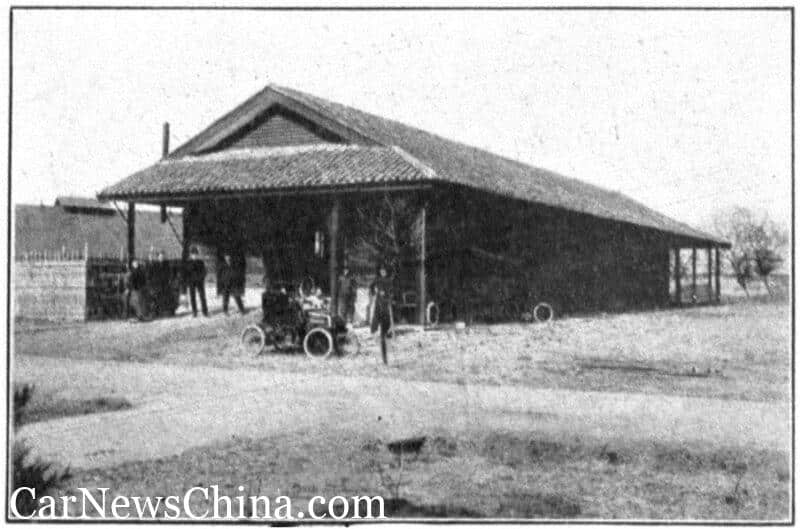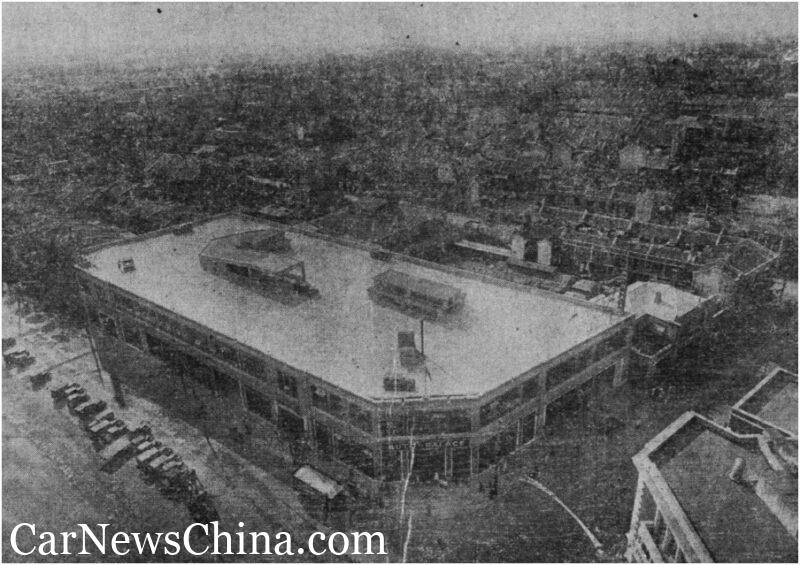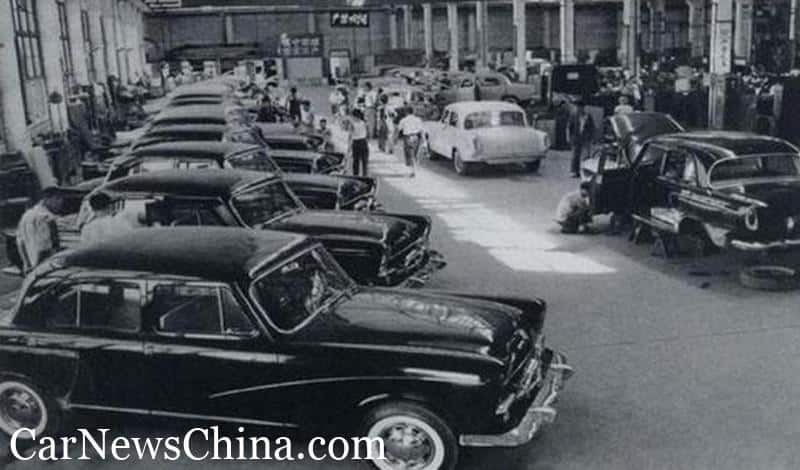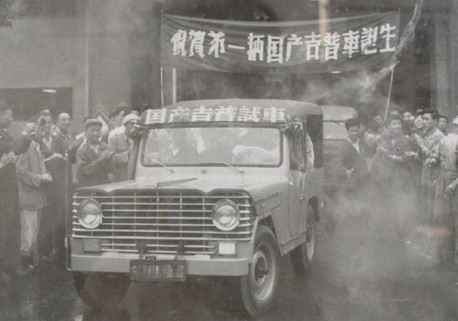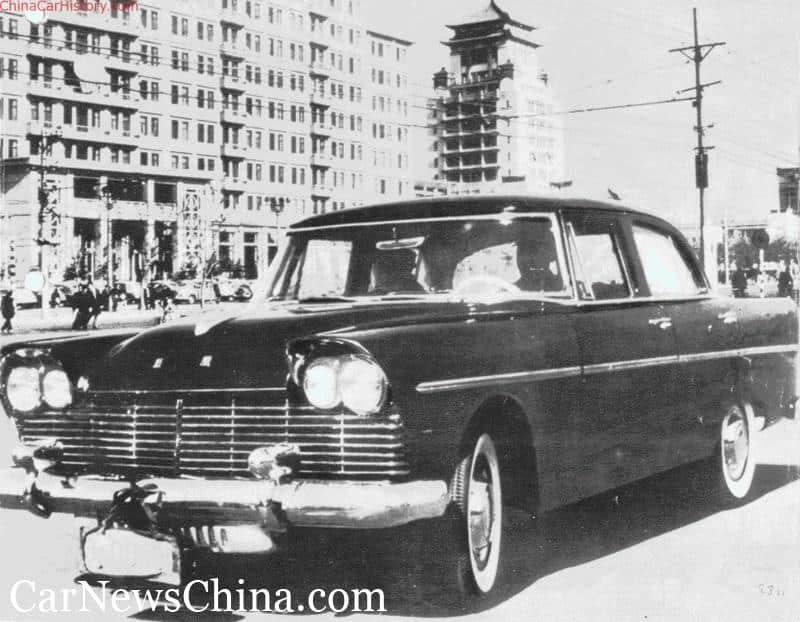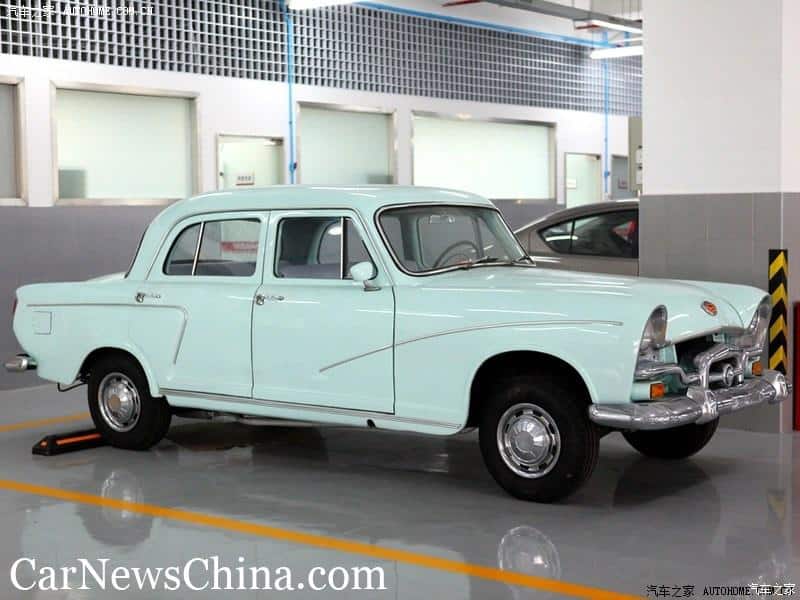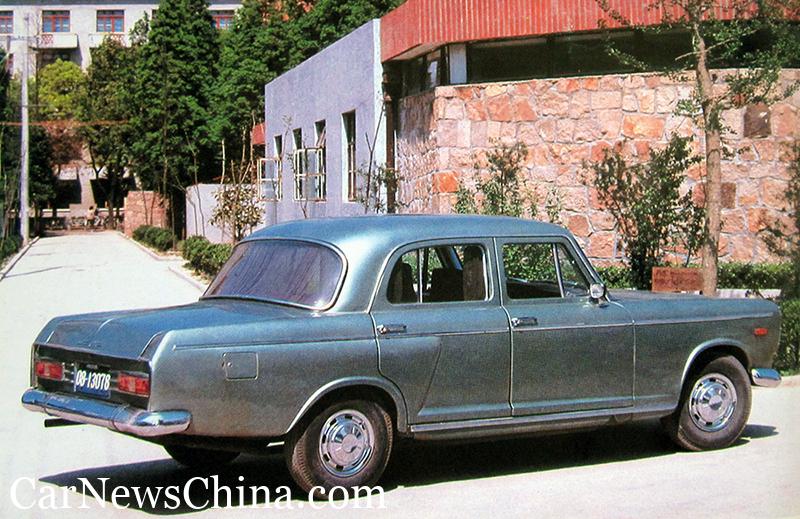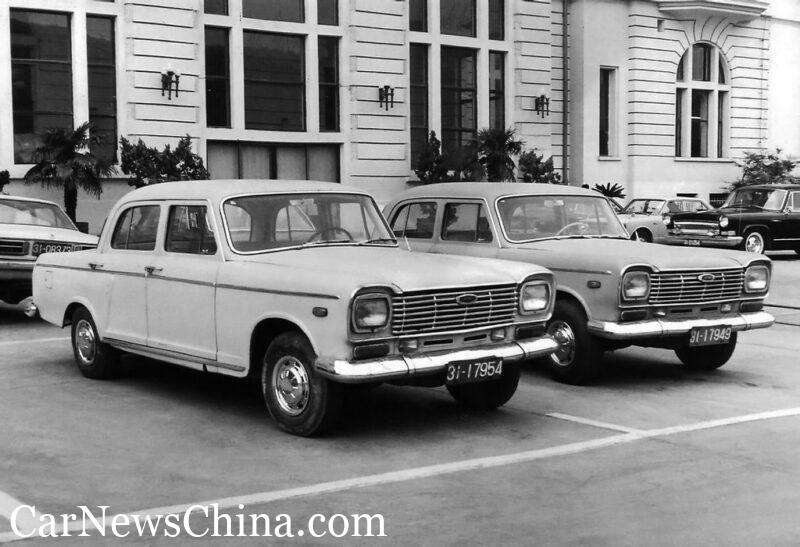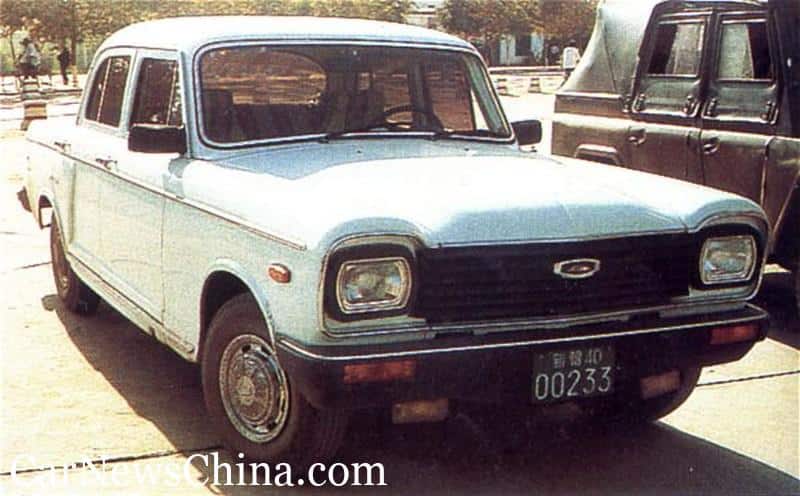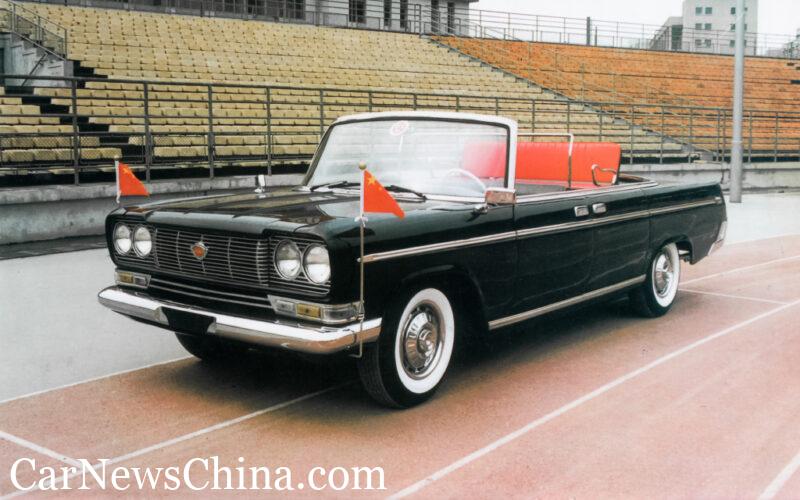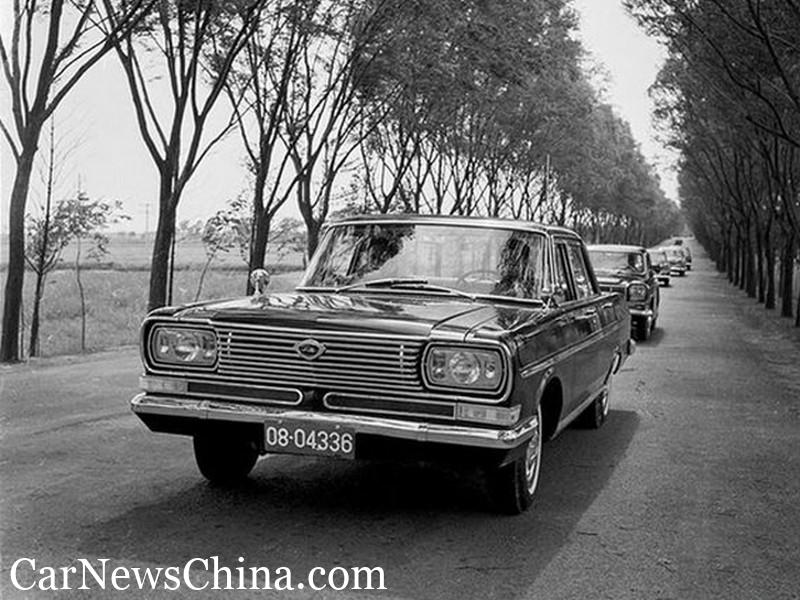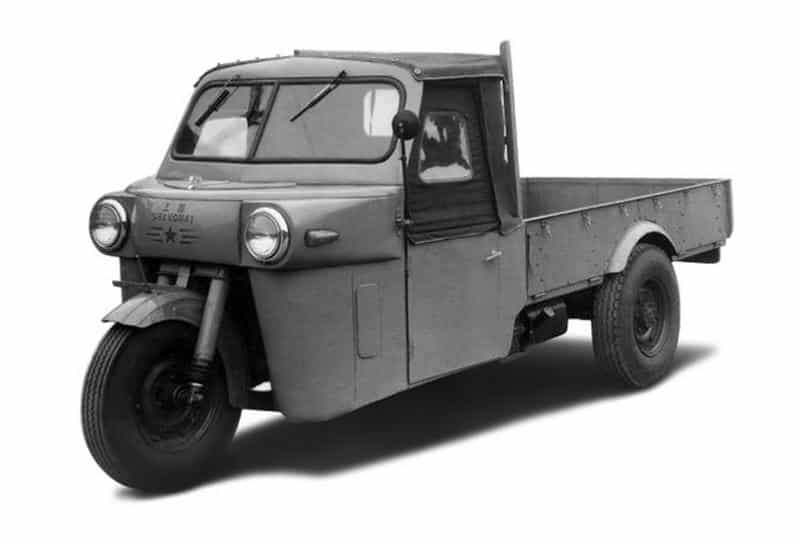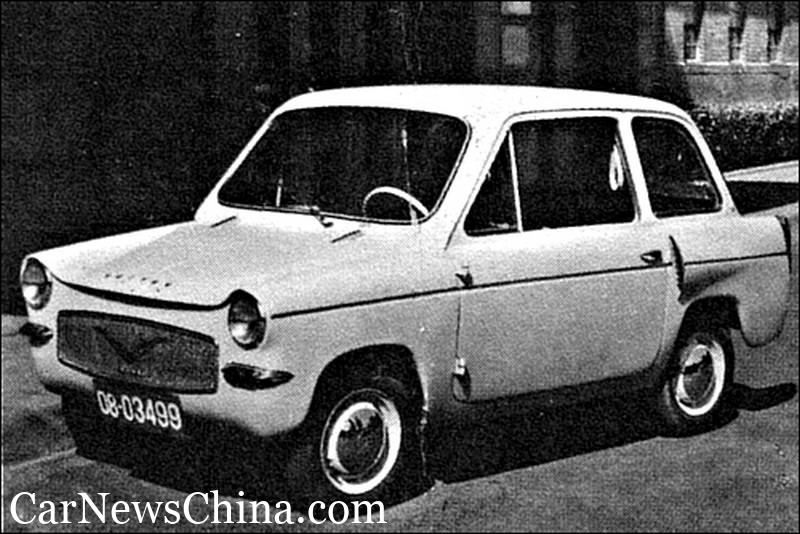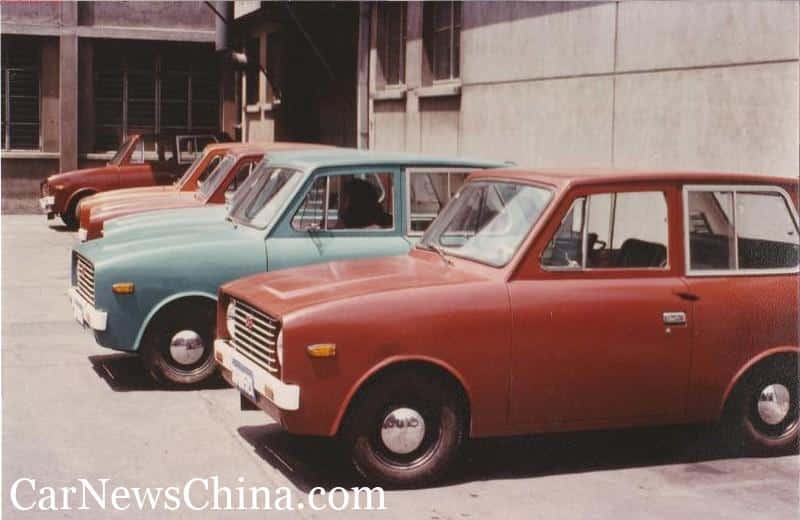The Big Read – SAIC (1/6) – Birth of a giant
SAIC is China’s largest car manufacturer. The Shanghai based company achieves this feat through two of the most successful joint ventures in the country and exploiting several successful self-owned brands. In the coming weeks we’ll look at SAIC from every angle, but we start at the beginning: in its hometown Shanghai.
During the imperial dynasties, Shanghai was an important trading city at the mouth of the Yangtze River. After the Sino-British Opium War in the mid-19th century, the city was divided into four parts: a Chinese, British, French and American part. A bit like Berlin was also a divided city for a long time. In 1895 a fifth party was added: the Japanese. Despite its colonial division, Shanghai grew in the early decades of the 20th century into the most fashionable city in China and the most important trade and financial hub in Asia.
Shanghai auto industry in the early 20th century
Due to the international presence, the first cars in China appear in Shanghai. A Hungarian dealer in the French part of the city imports two Oldsmobiles in 1901. Ten years later there are more than 200 cars in the city and by 1920 that number has grown to 1,899. To finish the list, in 1935 there are more than 10,000 cars and in 1947 almost 27,000. These are all imported models, although a number of coachbuilders operate in the colonial parts of the city. These import a rolling chassis and make a body locally.
This growth in mobility also provides an economic impulse. Of course, all those cars need regular maintenance and spare parts. The parts supply from distant Europe and America is of course not optimal and so all kinds of workshops are popping up, which are engaged in making car parts and taking care of maintenance. This grows into a network of dozens of garages, workshops and parts factories. Not one, but a lot of these companies are the forerunner of Shanghai Automobile.
First let’s go back to the history of the city of Shanghai. In 1912 China had become a republic, but the government was weak and actual power fell to regional “warlords”. At the same time, Japan, which at that time harbored major colonial plans, began to interfere in China’s internal problems. This led to a presence and in 1931 total occupation of Manchuria in the northeast. After that, Japan expanded its influence in the north and the Hebei region, near Beijing. In 1917, it embarked on a full-scale invasion of China and steadily expanded its sphere of influence southwards along the eastern coastal strip. The Chinese part of Shanghai was conquered in 1937, the European and American parts in 1941 after the attack on Pearl Harbor. After the capitulation of the Japanese in 1945, they also disappeared from China. There began a civil war between the nationalists of the Kuomintang and the communists. The latter was finally declared victory in 1949.
Despite all this unrest and armed conflict, a very large proportion of Shanghai’s car companies survived. With the advent of communism came major government involvement in business. The new Chinese government created all kinds of committees and offices to monitor the ins and outs of the industry. The companies in Shanghai were also transformed into state-owned enterprises or public-private cooperatives. The Chinese tend to change names, or jurisdictions, of all those governing agencies, depending on the needs of society. These agencies also gave all kinds of companies new names, merged or separated them, or transferred them to another agency. Because of this, the early development of the auto industry in Shanghai is a maze of company names and shifting responsibilities.
The very first company that can be seen as a forerunner of Shanghai Automobile is the Public Works Company in the French sector of Shanghai. It was founded in 1910, among other things for arranging public transport, and 10 years later they also open a workshop. This company eventually becomes the Shanghai Automobile Engine Factory.
Communist consolidation of the Shanghai auto industry
However , we focus our attention on a different company . As early as 1903, somewhere on a grassy field in the French sector, there was a barn that served as a blacksmith shop. Carriages are made and later it is also a garage. In 1918, this company (probably called Baochang Company, but I’m not sure) merges with the Chinese-English Liwei Automobile from the English sector. The company then imports a large number of brands, including Austin, Bedford and Chevrolet. They conduct their business from a landmark building called ‘The Auto Palace’ on Baochang Road (now Huaihai Street) culminating in a rooftop test track. Just like Fiat’s Lingotto factory.
After the communist takeover, Liwei Automobile comes under army control. In March 1958, control was transferred to a Shanghai government committee and the name was changed to Shanghai Automobile Assembly Factory. Two years later, the company moves to a brand new building in the Anting district and is given the name by which it will be known for a long time: Shanghai Automobile Manufacturing Factory (SAMF). This is the company that will eventually make the first cars, but I’ll get to that in a moment.
As mentioned, the automotive industry in Shanghai spread over a diversified group of companies and is controlled by various committees of the local government. Over the years these committees went through several reorganizations and consolidations, which finally leads to the company known as SAIC. While it is still very far from that, the very first predecessor of SAIC was formed in 1955. In December of that year, the aforementioned Public Works Company is merged with a number of parts factories under the name Shanghai Internal Combustion Engine Components Company.
At about the same time, the Shanghai Powertrain Equipment Manufacturing Company is also established. This is also a combination of a number of parts factories, which have focused on agricultural vehicles, tractors and so. In both cases this still happens under the direction of the army, but in 1958 the authority is transferred to the government of Shanghai. Shanghai Internal Combustion and Shanghai Powertrain Equipment is therefore merged into the Shanghai Powertain Machinery Manufacturing Company. SAMF, the car factory, will also come under the jurisdiction of this umbrella group. In 1960, Shanghai Powertrain is renamed Shanghai Agricultural Machinery Manufacturing Company.
The last name change shows which products are most important in those years, namely agricultural vehicles. Several tractors are already being built, but we will now focus on the first SAMF cars. In the 1950s, the factory is still under military control, so it is not surprising that the first model is a Jeep-like one. In 1957 SAMF shows a self-developed prototype, but it is never put into production. However, a year later production of the Shanghai 58 begins, a direct copy of the Jeep C3J, many of which were left behind by the Kuomintang. About 500 were made in 1958, with about 130 more to follow in the years up to and including 1963.
A few years later, SAMF makes another military vehicle, the SH211. This car is very similar to the then already very popular Beijing BJ212. The production version (SH211A) is made from 1969 to 1977 and has a total production run of 3,324 copies.
The Fenghuang and the Shanghai sedans
However, the car that it is all about for us is the Fenghuang. Fenghuang is the Chinese translation of Phoenix, the mythological bird that was reborn from its own ashes. Three prototypes of this Fenghuang will first appear before series production begins. The first prototype is based on the Russian GAZ M20 “Pobeda”, but with a body that closely resembles that of a Plymouth Savoy. This car is shown for the first time in September 1958. In January 1959 a second version followed with a slightly different body. Little is known about the engine of this car. Some it’s a V8, but the most likely option is a six-cylinder by Nanjing Automobile.
The third prototype follows later in 1959. This car is technically a copy of the Mercedes-Benz 220 from 1954 with a body similar to the first prototype. This is ultimately the basis for the production version, although SAMF is still designing a completely new body, which is clearly inspired by the Volga M21.
The production of the Fenghuang does not run smoothly. There are two important reasons for this. First, SAMF does not have advanced equipment. All Fenghuangs are actually completely hand built cars. For example, because there are no large presses, the body of the car is made from a piece of sheet metal using a mold and a hammer. Monk’s work. Secondly, this takes place at the time of the “Great Leap Forward”, when the Chinese economy is completely disrupted and there are shortages of all kinds of raw materials. Ultimately, there is no consensus on the total production numbers of the Fenghuang. Erik van Ingen-Schenau mentions the following numbers in his beautiful photo book “Shanghai, saloons from the artisan era” based on government figures: 1 in 1958, 5 in 1959, 12 in 1960 and 4 in 1961. So a total of 22 copies as production ends in 1961.
However, that is not the end of the Fenghuang, not even by a long shot. SAMF invests in new machines and in 1963 the Shanghai Agricultural Machinery Manufacturing Company forms a committee to prepare the Fenghuang for production again. They don’t waste their time. The revised car is re-launched on the market in February 1964. Technically, it is largely the same as the earlier Fenghuang, but the bodywork is being modified in many places. The car also gets a new name: from now on it will be known as the Shanghai SH760.
The production volume is initially about 50 cars per year. The Shanghai SH760 is intended for the middle management of the Communist Party and senior regional officials. This puts it between the two other essential Chinese models: the FAW Hongqi is for the absolute party leadership and the Beijing BJ212 is for lower officials and the military.
The SH760 remains unchanged in production for more than ten years, but in 1974 a facelift follows. The car gets a redesigned front with rectangular instead of round headlights and a new rear without the subtle fins of the original. However, the technical basis remains the same, although air conditioning will be available as an option. The modified Shanghai is known as the SH760A.
From 1984, remarkable things happen at the gate of SAMF. Every now and then ordinary Chinese citizens ask if they can buy a Shanghai sedan. This is because the government has lifted the ban on private ownership of cars. A small fraction of the Chinese are wealthy enough to afford one, but their choice is limited. Imported foreign models are still too expensive for them and the supply of Chinese-built cars is very limited. The joint ventures and the boom in the domestic industry has yet to begin. And so they end up at the gates of the only factory with a reasonable alternative.
Due to the sudden demand of ordinary citizens, the funny phenomenon occurs that a car design dating from the 1950s has its best sales results in the late 1980s. Production increases from a few hundred to several thousand per year. The very last year 1991, with more than 6,000 cars produced, is even the most successful in a 27-year career .
The car is tinkered with twice more. In 1986 the SH760B appears with a slightly larger engine (2.3 instead of 2.2 liters) and slightly more power. It is sold alongside the SH760A. In 1989 the model gets another minor facelift. Due to a change in the system of type registrations, the cars are called SH7221 and SH7231 from that moment on. On December 25, 1991, the 77,041st and last Shanghai sedan comes off the production line. A week later, on January 1, 1992, Shanghai Automobile Manufacturing Factory is transferred to the Shanghai-Volkswagen joint venture (more on that soon) and the history of Shanghai’s own car production ends.
Still, this isn’t quite the end of the SH760. As early as 1986, SAMF commissioned the English Locomotors to develop commercial versions of the car. Locomotors makes two prototypes. The SH760C is a two-door pickup (or actually: “ute”), the SH760D is a two-door crew-cab pickup. They were briefly made by SAMF in 1989 as SQ110 and SQ110A, but in 1990 production moved to Shanghai Shenlian Automobile Industry Company, a Shanghai Automobile company that carries out vehicle modifications (such as ambulances). There the pickup is called SH12020SP and there is also a four-door version available. In 1993 the pickups are facelifted and they are called SH1021SP. In total, about 6,840 are built from 1990 to 1994. Shenlian also makes a station wagon based on the four-door version, which goes through life as SQL5020.
During the three decades of SH760 production, SAMF several times developed a potential successor, the SH763 in 1966, the SH762 in 1967, the SH761 and SH750 in 1975 and the SH761S in 1977, but none of those designs made it to the production stage. However, fourteen convertibles (SH761) were made between 1966 and 1971 with a very different body design, which is used by the government as a ‘parade car’.
Shanghai also toyed with the idea of a larger model. Between 1970 and 1973 it produces a very small number of armored FAW Hongqi sedans (CA772, the Shanghai version is called SH770) and that leads to the development of the SH771. This is based on the Mercedes-Benz S-class 280SE from 1972, equipped with a Hongqi V8. SAMF builds 30 test cars this truly beautiful sedan (ChinaCarHistory has the pictures), but it doesn’t make serial production.
SAMF is not the only passenger car manufacturer within Shanghai Automobile, but the efforts of other companies are limited to very small runs. Only the Shanghai Truck Repair Factory (later to become Shanghai’s truck division) produces slightly larger numbers between 1958 and 1977. It is then a three-wheeled commercial vehicle based on the Daihatsu SDF-8, many of which remained after the Japanese occupation. The Shanghai Bus Repair Company builds small runs of mini cars several times. In the 60s they do this under the brand name Haiyan, at the end of the 70s a short-lived attempt follows with the Shanghai SK720.
Next week
Shanghai’ Automobiles transitions to a large corporate conglomerate and China’s biggest car manufacturer, aided by forming joint ventures with the leading automotive forces in Europe and the United States. And the self-owned brands returns.
Read more Automakers Stories
Every week we publish one exiting article about history of famous Chinese Automakers. Check the ones you haven’t read yet.






